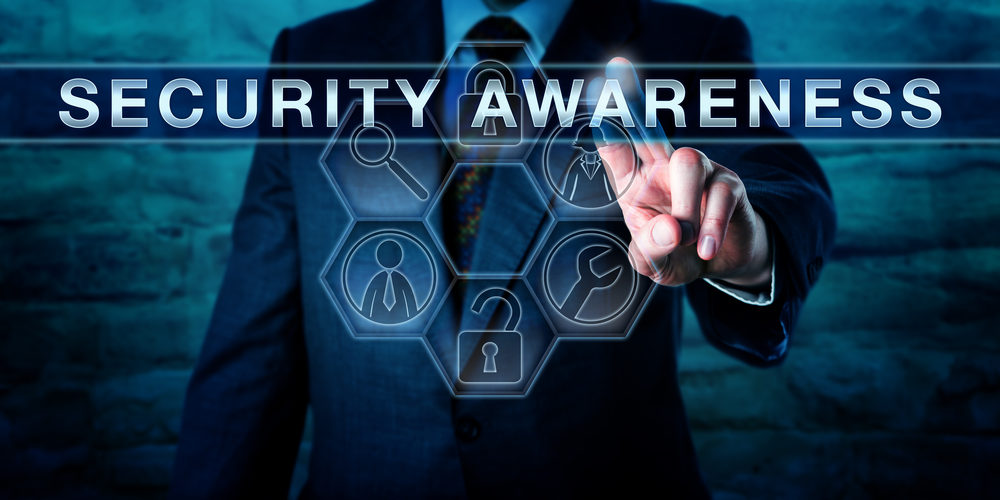Imagine going into work, settling into your routine, and realizing you can’t access your email. You try refreshing your browser, logging out and then back in again, only to realize something malicious has happened. You start to panic. You can’t work, don’t understand how this could have happened, and wonder what the cost to your business will be.
Email is arguably the most vital tool used in modern business. It helps us communicate with our customers, collaborate internally, and keeps the information we need to move forward flowing like the blood in our veins. Without it, the livelihood of our business is at stake.
What has become the lifeblood of today’s businesses, Cybercriminals are using to become just as successful. According to the report The State of Email Security 2018 by Mimecast, email is the main way hackers initiate attacks to defraud businesses such as phishing scams, malware delivery (such as ransomware), and impersonation. As a matter of fact, the report shows a whopping 90 percent of global organizations studied in the 2018 report described consistency or rise in the number of phishing attacks experienced in the previous year.
BEC and EAC Threats
The 2017 Internet Crime Report issued by the United States Federal Bureau of Investigation’s Internet Crime Complain Center confirms email is a major target of bad actors. The report shows business email compromise (BEC) is a huge trend. This sophisticated scam targets organizations that frequently work with foreign suppliers and/or businesses and perform wire transfers on a regular basis. A variation of the threat, known as email account compromise (EAC) specifically targets individuals who regularly make wire transfers.
The FBI warns that though some businesses report using checks rather than wire transfers, cybercriminals will very casually employ the method that your business typically uses to steal your funds so as not to draw attention to themselves. They do this by compromising your “legitimate business email accounts through social engineering or computer intrusion techniques to conduct unauthorized transfers of funds.”
Hacking and Spoofing
In 2013, the FBI’s report shows victims indicated the email accounts of Chief Executive Officers (CEOs) and Chief Financial Officers (CFO’s) were often spoofed or hacked.
When an email is hacked, criminals can intercept important messages and data. One example is Climategate. This occurred when email archives from the Climatic Research Unit at the University of East Anglia were copied by the thousands. The breach occurred just before the Copenhagen Summit on climate change. Skeptics used information from the stolen emails as grounds to argue that global warming was a scientific conspiracy.
Email spoofing, or impersonation, is the forgery of an email header so a message appears to have originated with someone other than the actual source. This is a common tactic used by cybercriminals in phishing campaigns and spam emails because employees with access to data and/or funds are likely to respond to emails from supervisors or clients. A bad actor may spoof the email header of a CEO and send an email to someone that often handles wire transfers within the company, demanding an immediate wire transfer to avoid an emergency situation. In addition, spoofing can also be used by bad actors to fraudulently invoice business customers for goods or services with the funds going directly to accounts they have set up in order to steal money from the pockets of your unsuspecting clients.
Attackers are becoming ever more clever in the way they deceive victims. With social engineering, cybercriminals are learning to target specific individuals in a company by impersonating them online. In the last year, nearly 40 percent of organizations have seen impersonations of “finance/accounts” personnel and 28 percent report C-suite executives as targets of impersonations. Another 25 percent of organizations reported impersonations of human resources staff. In total, 20 percent of respondents studied in the Mimecast report suffered a direct financial loss as the result of an impersonation attack.
Phishing by Numbers
Phishing is another form of email threat. Phishing occurs when someone sends an unsolicited email, text message, or telephone call that is purportedly from a legitimate company. Such phishing messages may request personal or financial information or even login credentials. An online article by TripWire reported that three-quarters of organizations experienced phishing attacks in 2017. This number held steady from the previous year.
A study by Dr. Zinaida Benenson, a professor at the University of Erlangen-Nuremberg who leads the “Human Factors in Security and Privacy” research group, demonstrated that 45 percent of people will click on a malicious link if it includes their name. In a second study where the recipient name was not used, 20 percent of people still clicked on the link. She suggested companies employ a “reporting” feature to flag suspicious emails or that utilize digital signatures to stop them before employees have a chance to get click happy.
Ransomware
Ransomware is a form of malware. It targets weaknesses by both security technology and human users. This malicious type of malware is typically delivered through vectors such as remote desktop protocols which allow computers to connect to one another across networks. Additionally, ransomware can also be sent through phishing emails that are sent to an end user resulting in the rapid encryption of sensitive data or files in a network.
Cybercriminals seize control of a business’s data in these ways and then hold it for ransom, often demanding large sums of money to restore access. Some cybercriminals even threaten to release proprietary information or data if a ransom is not paid within a given timeframe. Aside from that, the Mimecast report shows an average downtime three days after a ransomware attack which can cost your business even more money.
WannaCry, also known as WannaCrypt, was one of the major ransomware attacks in the history of IT. It affected several hundred thousand machines around the world bringing businesses from banks to law enforcement agencies as well as infrastructure companies to their knees.
Internal Threats
The Mimecast report also demonstrates that internal threats are also on the rise. Of the organizations studied, 88 percent reported internal threats caused by careless employees over the course of the last 12 months. To make matters worse, another 80 percent reported accounts had been compromised and 7- percent identified malicious insiders as a cause of internal issues during the same period.
Insiders have a distinct opportunity to wield emails. They can steal information and send it to outsiders or publish it for their own gain. This is where using the practice of least privilege can help protect your business.
Prevention is the Best Medicine
It’s been said that the best defense is strong offense. That is particularly true when it comes to cybersecurity. Just as you inoculate a child against disease with vaccinations, businesses should employ preventative measures to reduce the odds of an attacker getting in through their email.
Oddly enough, businesses have taken a more reactionary approach to cybersecurity and it’s costing them big time. Changes in data storage technology such as migrating email to platforms such as the Cloud or Microsoft Office 365 is leading businesses to oversimplify their security strategy. Business leaders believe they can save money and minimize the complexity of managing their cybersecurity by employing a defense-only model. This way of thinking falls short of providing the forethought and prevention the best security has to offer.
“Attackers are leveraging these same changes and are working in real-time to exploit gaps in your security program,” warns the Mimecast report, which predicts that 50 percent of organizations will suffer a negative business impact from an email-borne attack this year.
Education is Key
While email is unequivocally a major business tool, it can also be a major security threat. Of the organizations studied for the Mimecast report, “61 percent were hit by an attacker where malicious activity was spread from one infected user to other employees via email.” That is why cybersecurity awareness training is so imperative to a solid business security strategy, especially for business leaders.
According to Mimecast, nearly 40 percent of organizations see the CEO of their organization as a “weak link” in the cyber security chain. In fact, the study showed 31 percent of C-level employees have unintentionally sent sensitive information to the wrong person in the last year compared to 22 percent of other employees. This is due in part to corporate level employees having access to more sensitive business data than the average employee. Over the last 12 months, the report also showed 20 percent of organizations had C-level employees send proprietary data via email in response to a phishing email.
All employees should receive regular cyber security awareness training to prevent breaches before they can happen. While every employee needs regular training to keep up on the latest threats, this is especially true for C-level employees and those with access to sensitive data. You want to ensure there is security expertise at the leadership level of your business and the right training can get you there.
Cyber Resilience is Everyone’s Job
Implementing a solid cyber resilience plan is the responsibility of every employee. It doesn’t just fall to one person or department. Of businesses that have employed a cyber resilience plan, 80 percent feel prepared to fight ransomware and are confident that their sensitive data and files are properly backed up and encrypted, according to the report by Mimecast.
There are several steps to implementing a cyber resilience plan for any business based on the four dimensions of cyber resilience: Threat protection, adaptability, durability, and recoverability. Those steps include ensuring:
• The right security services are in place before an attack happens.
• A durability plan to keep email and business operations running during an attack or security breach.
• The ability to recover data and other corporate IP after a cyber incident or breach occurs.
Extra Tips
Here are a few more tips from the State of Email Security report to help close the security gaps at your business:
• Place cybersecurity into the function that manages overall risk mitigation for your business.
• Understand upper management sets the tone for company culture including security.
• Benchmark your security controls and risk management programs against similar businesses on a regular basis.
• Engage your security team on a regular basis to discuss your security program and requirements as well as the need for changes.
• Leverage internal marketing to communicate that security is everyone’s responsibility.
For more information on implementing a winning cyber resilience strategy for your small business, contact Oram now at (617) 933-5060.


